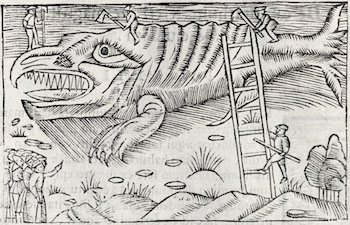Abstract: In this paper I will examine a remarkable case of the transmission of information about the sea monsters in the waters of Iceland from a thirteenth-century Icelandic text to a sixteenth-century Dutch map. The Icelandic text is the Konungs skuggsjá, also known as the Speculum regale or King's Mirror, written as a dialogue between a son and father and intended for the education of Prince Magnus Lagabøte (reigned 1263-1280). This book has a detailed and interesting chapter on “The Marvels of the Icelandic Seas” that describes several sea monsters, particularly various types of whales. The map in question is Abraham Ortelius's map of Iceland, which first appeared in the 1587 Théâtre de l'univers, a French edition his Theatrum Orbis Terrarum, which is regarded as the first modern atlas and was first published in 1570. The map is famous for the abundant sea monsters it depicts around the island, and a close study of Ortelius's descriptions of the monsters clearly reveals the influence of the King's Mirror. It is very unlikely that Ortelius consulted the King's Mirror directly; it is much more probable that the information about the sea monsters came to him together with the map he used as a model, which was given to him by the Danish historian Andreas Velleius (or Anders Sørensen Vedel) (1542-1616), and was probably prepared by the Icelander Guðbrandur Þorláksson (or Gudbrandur Thorlaksson) (1541-1627).
While the map's depiction of the geography of Iceland is far more accurate than that of any earlier map, so that with it Ortelius brings the island properly into the geographical ken of Europe, the presence of so many fierce sea monsters on the map tends to suggest, contrariwise, that the island was a wild and inapproachable place at the very edge of the known world.
- Image

 PDF version
PDF version

